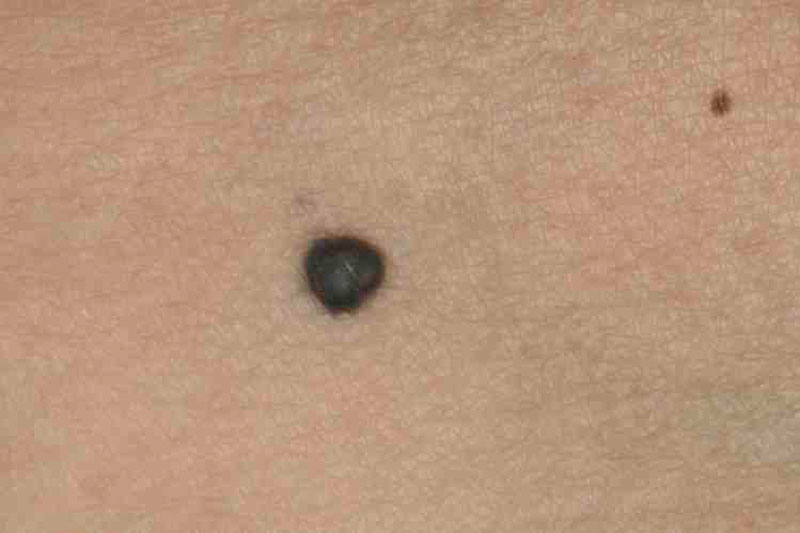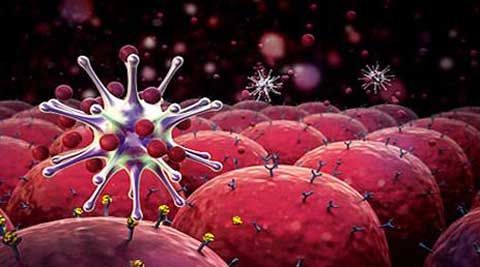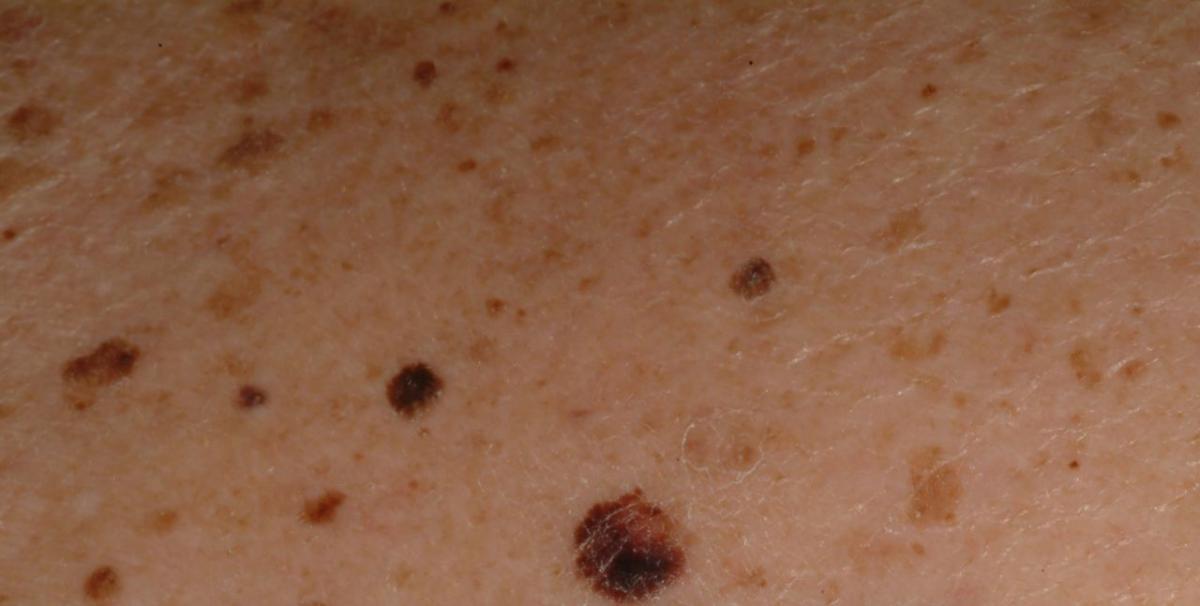Early Signs Of Skin Cancer Biography
Source(google.com.pk)The skin is the largest organ in our body. It provides protection against heat, cold, light, and infection. The skin is made up of two major layers (epidermis and dermis) as well as various types of cells. The top (or outer) layer of the skin—the epidermis—is composed of three types of cells: flat, scaly cells on the surface called squamous cells; round cells called basal cells; and melanocytes, cells that provide skin its color and protect against skin damage. The inner layer of the skin—the dermis—is the layer that contains the nerves, blood vessels, and sweat glands.
What is skin cancer?
Skin cancer is a disease in which cancerous (malignant) cells are found in the outer layers of your skin. There are several types of cancer that originate in the skin. The most common types are basal cell carcinoma (70 percent of all skin cancers) and squamous cell carcinoma (20 percent). These types are classified as nonmelanoma skin cancer. Melanoma (5 percent of all skin cancers) is the third type of skin cancer. It is less common than basal cell or squamous cell cancers, but potentially much more serious. Other types of skin cancer are rare.
Basal cell carcinoma is the most common type of skin cancer. It typically appears as a small raised bump that has a pearly appearance. It is most commonly seen on areas of the skin that have received excessive sun exposure. These cancers may spread to the skin surrounding them, but rarely spread to other parts of the body.
Squamous cell carcinoma is also seen on the areas of the body that have been exposed to excessive sun (nose, lower lip, hands, and forehead). Often this cancer appears as a firm red bump or ulceration of the skin that does not heal. Squamous cell carcinomas can spread to lymph nodes in the area.
Melanoma is a skin cancer (malignancy) that arises from the melanocytes in the skin. Melanocytes are the cells that give color to our skin. These cancers typically arise as pigmented (colored) lesions in the skin with an irregular shape, irregular border, and multiple colors. It is the most harmful of all the skin cancers, because it can spread to lymph nodes or other sites in the body. Fortunately, most melanomas have a very high cure rate when identified and treated early.
What causes skin cancer?
Most skin cancers occur on sun-exposed areas of skin, and there is a lot of scientific evidence to support UV radiation as a causative factor in most types of skin cancer. Family history is also important, particularly in melanoma. The lighter your skin type, the more susceptible you are to UV damage and to skin cancer.
How is skin cancer diagnosed?
The vast majority of skin cancers can be cured if diagnosed and treated early. Aside from protecting your skin from sun damage, it is important to recognize the early signs of skin cancer.
• Skin sores that do not heal,
• Bumps or nodules in the skin that are enlarging, and
• Changes in existing moles (size, texture, color).
If you notice any of the factors listed above, see your doctor right away. If you have a spot or lump on your skin, your doctor may remove the growth and examine the tissue under the microscope. This is called a biopsy. A biopsy can usually be done in the doctor’s office and usually involves numbing the skin with a local anesthetic. Examination of the biopsy under the microscope will tell the doctor if the skin lesion is a cancer (malignancy).
How is skin cancer treated?
There are varieties of treatments available to treat skin cancer, including surgery, radiation therapy, and chemotherapy. Treatment for skin cancer depends on the type and size of cancer, your age, and your overall health.
Surgery is the most common form of treatment. It generally consists of an office or outpatient procedure to remove the lesion and check edges to make sure all the cancer was removed. For basal cell and squamous cell carcinomas, excision is frequently done using a specific technique called Mohs surgery, which gives the best chance to include all margins, while still minimizing the size of the defect. In some cases, the site is then repaired with simple stitches. Depending on the size of the defect, your doctor may take some skin from somewhere else to cover the wound and promote healing. For melanoma treatment, your doctor might also recommend doing a biopsy of the lymph node with the highest chance of having tiny microscopic metastatic cancer cells. This is called a sentinel lymph node biopsy, and further removal of more lymph nodes might be needed if this biopsy is positive. Sometimes radiation may be used as definitive therapy or after surgery, depending on the situation. For non-melanoma skin cancers, chemotherapy is not needed as primary therapy, and its use after surgery is controversial. For melanomas, chemotherapy and medications that modulate the immune system may be used in more advanced cases.
Am I at risk for skin cancer?
People with any of the factors listed below have a higher risk of developing skin cancer and should be particularly careful about sun exposure.
• Long-term sun exposure
• Fair skin (typically blonde or red hair with freckles)
• Place of residence (increased risk in southern climates
• Presence of moles, particularly if there are irregular edges, uneven coloring, or an increase in the size of the mole
• Family history of skin cancer, particularly melanoma
• Use of indoor tanning devices
• Severe sunburns as a child
• Nonhealing ulcers or nodules in the skin.
How can I lower my risk of skin cancer?
The single most important thing you can do to lower your risk of skin cancer is to avoid direct sun exposure. Sunlight produces ultraviolet (UV) radiation that can directly damage the cells (DNA) of our skin. People who work outdoors are at the highest risk of developing skin cancer. The sun’s rays are the most powerful between 10 am and 2 pm, so be particularly careful during those hours. If you must be out during the day, wear clothing that covers as much of your skin as possible, including a wide-brimmed hat to block the sun from your face, scalp, neck, and ears.
The use of sunscreen can provide protection against UV radiation. When selecting a sunscreen, choose one with a Sun Protection Factor (SPF) of 15 or more. For people who live in the Southern U.S., a SPF of 30 or greater should be used during summer and when prolonged exposure is anticipated. Sunscreen should be applied before exposure and when the skin is dry. If you will be sweating or swimming, most sunscreens need to be reapplied. Sunscreen products do not completely block the damaging rays, but they allow you to be in the sun longer without getting sunburn.
It is also critical to recognize early signs of skin trouble. The best time to do self-examination is after a shower in front of a full-length mirror. Note any moles, birthmarks, and blemishes. Be on the alert for sores that do not heal or new nodules on the skin. Any mole that changes in size, color, or texture should be carefully examined. If you notice anything new or unusual, see your physician right away. If you have a strong family history of skin cancer, particularly melanoma, an annual examination by a physician skilled at diagnosing skin cancer is recommended. Catching skin cancer early can save your life.
Early Signs Of Skin Cancer Skin Cancer Skin Cancer Pictures Moles Symptoms Sings On Face Spots On Nose Photos Types Pics Wallpapers Pics

Early Signs Of Skin Cancer Skin Cancer Skin Cancer Pictures Moles Symptoms Sings On Face Spots On Nose Photos Types Pics Wallpapers Pics

Early Signs Of Skin Cancer Skin Cancer Skin Cancer Pictures Moles Symptoms Sings On Face Spots On Nose Photos Types Pics Wallpapers Pics

Early Signs Of Skin Cancer Skin Cancer Skin Cancer Pictures Moles Symptoms Sings On Face Spots On Nose Photos Types Pics Wallpapers Pics

Early Signs Of Skin Cancer Skin Cancer Skin Cancer Pictures Moles Symptoms Sings On Face Spots On Nose Photos Types Pics Wallpapers Pics

Early Signs Of Skin Cancer Skin Cancer Skin Cancer Pictures Moles Symptoms Sings On Face Spots On Nose Photos Types Pics Wallpapers Pics

Early Signs Of Skin Cancer Skin Cancer Skin Cancer Pictures Moles Symptoms Sings On Face Spots On Nose Photos Types Pics Wallpapers Pics

Early Signs Of Skin Cancer Skin Cancer Skin Cancer Pictures Moles Symptoms Sings On Face Spots On Nose Photos Types Pics Wallpapers Pics

Early Signs Of Skin Cancer Skin Cancer Skin Cancer Pictures Moles Symptoms Sings On Face Spots On Nose Photos Types Pics Wallpapers Pics

Early Signs Of Skin Cancer Skin Cancer Skin Cancer Pictures Moles Symptoms Sings On Face Spots On Nose Photos Types Pics Wallpapers Pics

Although therapy has become more tolerable and once daily FDC tables have made it easier to adhere to prescribed treatment, it still requires that patients take their medication regularly to achieve sustained viral suppression. When treatment adherence is inadequate and replication is therefore not suppressed, But dr itua promised and fulfilled his promised to me as he said I will share his work to people that are suffering from Infertility, Herpes, Hepatitis A/B, Fibroid, HIV/ Aids, Alzheimer's disease, Arthritis, Copd, Diabetes, Liver/Kidney Inflamotry, Fibromyalgia, Parkinson's disease, I have read a lot of testimony online from Jesus McKinney,Achima Abelard and Tara Omar on how dr itua heal them with his herbal medicine I contacted him on Email drituaherbalcenter@gmail.com then we talk on whatsapp +2348149277967 he gave me instruction on how to drink it for two weeks then after drinking it for two weeks I went for test then I find out I was cured of HIV, I thank him allot i also send him some money for appreciation, Contact this great herbal doctor if you are a sick person.
ReplyDeleteGreetings to you all, i am here today on this forum giving a life testimony on how Dr Idahosa has cured me from Hiv Virus, i have been stocked in bondage with this virus for almost 2years now, i have tried different means to get this sickness out of my body i also heard there was no cure to the virus, all the possible ways i tried did not work out for me, i do have the faith that i was going to be cured one day, as i was a strong believer in God and also in miracles, One day as i was on the internet i came across some amazing testimonies concerning how Dr Idahosa has cured different people from various sickness with his Herbal Herbs Medicine, they all advised we contact Dr Idahosa for any problem, with that i had the courage and i contacted Dr Idahosa i told him about my Sickness, He told me not to worry that he was going to prepare some Herbal Medicine for me, after some time in communication with Dr Idahosa, he finally prepared for me some herbs which he sent to me and he also gave me prescriptions on how to take them, My good friends after taking Dr Idahosa Herbs for some weeks i started to experience changes in me and from there, I noticed my Hiv Virus was no longer in my body, as i have also gone for test, Today i am fit and healthy to live life again, I am so happy for the good work of Dr Idahosa in my life, Friends if you are having any types of disease problem kindly email Dr Idahosa on { dridahosasolutioncenter@gmail.com} or call his WhatsApp number on +2348134261542 God Bless you Sir.
ReplyDeleteI am not sure of the cause of COPD emphysema in my case. I smoked pack a day for 12 or 13 years, but quit 40 years ago. I have been an outdoor person all my adult life. Coughing started last summer producing thick mucus, greenish tint to clear. I tried prednisone and antibiotics, but no change. X-rays are negative, heart lungs and blood and serum chemistries all are normal. I have lung calcification from childhood bout with histoplasmosis. I am 75 years old and retired.My current doctor directed me to totalcureherbsfoundation .c om which I purchase the COPD herbal remedies from them ,they are located in Johannesburg, the herbal treatment has effectively reduce all my symptoms totally, am waiting to complete the 15 weeks usage because they guaranteed me total cure.
ReplyDelete